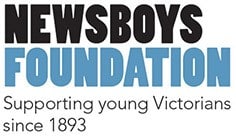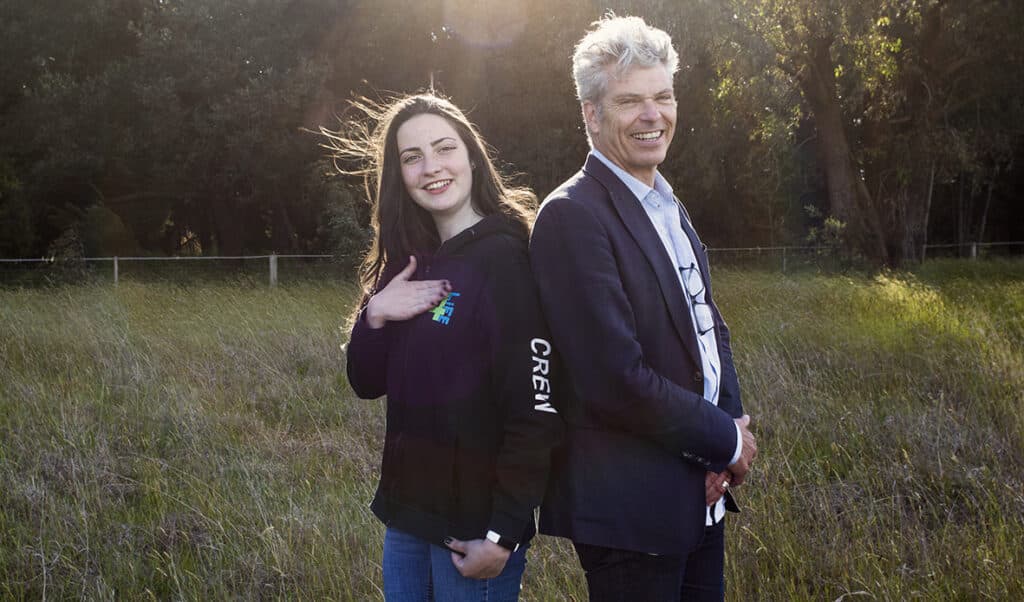Here’s an example of Live4Life at its best.
With yet another pandemic lockdown looming in Victoria early in 2021, a Year 12 boy in a rural community that had started implementing Live4Life in the previous year, started to worry about a classmate, who was showing signs of not coping.
Number one, the caring friend knew what ‘not coping’ looked like. He had a trained eye for the signs and asked his mate is if he was okay, using careful language and questions taught in the mental health training provided by Live4Life.
Number two, he then reached out to a teacher who he knew was versed in Live4Life’s techniques for noticing struggling youths. He and the teacher spoke the same language of care, knew what questions to ask and signs to be concerned about.
Trained in what to do and when, the teacher stepped in and reached out to the struggling boy who admitted he had been considering harming himself, or worse. The conversation led to him accepting help and care.
Life4Life CEO Bernard Galbally tells this story with satisfaction and pride, and the emphasis that such a smooth intervention was only possible because Live4Life had been embedded in that rural community. It had already become ingrained in the language and habits of everybody from schoolkids to council, health workers to police, so that everybody was ready to divert that potentially tragic moment.
In a way, Live4Life’s ultimate goal would be to put itself out of existence because its tested and proven methods of supporting vulnerable youth had become core to the universal care across Victoria and Australia.
The program’s true success comes when everybody buys in, from schools and hospitals to the young people themselves, as well as their families, teachers and, also, people like the tuck shop attendant or the school bus driver. “These are people who might have almost daily contact with kids for 12 years,” Bernard points out. They can be more than just ‘extras’ in a kid’s life, especially if they’re aware.
Even better, the real drivers are young people, the “Crews”, recruited as volunteers at the end of year 8 and active through their secondary years 9 & 10, in messaging, support and entertaining fellow students, while delivering important mental health education. The everyday language can be changed dramatically from the ground up to help thwart the alarming rural suicide statistics.
It’s no wonder that Live4Life is now in nine rural Victorian Shires and Council regions, with another 20 ‘keen to implement’. And that the Victorian Government recently added the organisation to its evidence-based school mental health funding streams, starting in the second half of 2022. Talks are also underway at a federal level, with plans for a Department of Health assessment of a potential rollout in a typical rural community where recruiting mental health assistance for schools can be difficult and there are acute staff shortages. “The thing about Live4Life is that it doesn’t burden the existing workforce,” Bernard explained. “This is why communities come to us; the Live4Life model builds capacity in the local community and builds resilience. We don’t impose it on communities either. We are invited in. We have an Expression of Interest process to identify needs and who would be interested.”
Live4Life’s model brings together many community players and then works closely with them for about a four-year period, showing how to embed the model so it becomes self-sustainable in that community.
“Macedon Ranges Shire, where Life4Life began and is now in its eleventh year, is fully embedded in the community and the Glenelg Shire and Benalla, both five years in, are now transitioning to self-sustainability,” Bernard said.
Given this reliance on cooperation and relationships through a community, it makes sense that Live4Life’s own growth has been because of similar teamwork. The organisation’s strategy for planned growth is thanks to Live4Life’s close relationship with Social Venture Partners Melbourne, after an introduction from the Newsboys Foundation’s Sandy Shaw.
Bernard and Sandy had crossed paths repeatedly over the years in a very Melbourne kind of way, from living near one another years ago to Sandy being part of a group offering advice for some mentoring Bernard was doing with a young Indigenous artist in the early 2000s. Once he joined the Board of Live4Life in 2017, he reached out to Sandy who stepped him through what the organisation would need to do to have sustainable growth centred on evidence-based results. She introduced him to SVP Melbourne, who have since guided work on functional capacity, a Board skill matrix, and other requirements to become robust and effective.
More recently, evidence-based results in place, Newsboys has also funded some of Live4Life’s work, to help communities benefit.
“SVP look at where an organisation is on their growth chart and like to come in at that tipping point where an organisation could either die away or could start to see significant growth,” Bernard said. “When we began this journey with SVP, I was two days a week and we had a project manager three days a week. I’m now full time, we have 10 staff who equate to about five full time positions and have established a range of committees that support the board.
“Sandy has been incredible. It’s not just the introductions to people who could help, it’s that people respect who she is introducing, because it’s her doing so. You get an immediate engagement with that person because of the respect.”
Nick Place 2021

